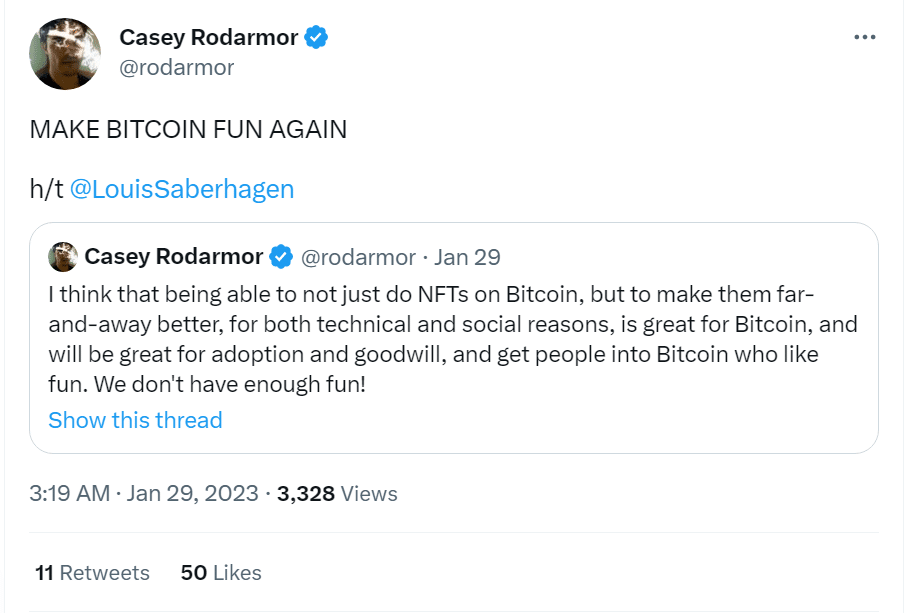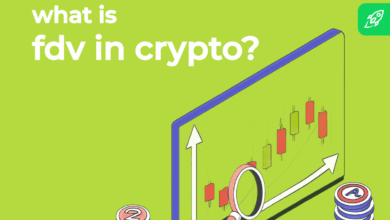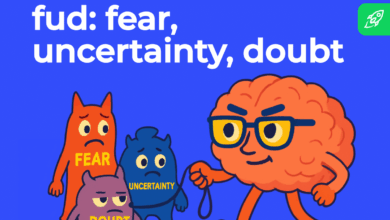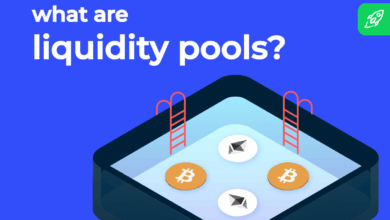Full Guide to Bitcoin Ordinals

beginner
Are you familiar with Bitcoin Ordinals? If not, you’re not alone. These digital artifacts have recently emerged as a major contender in the Web3 world, sparking excitement, debate, and even some confusion among crypto enthusiasts.
Bitcoin Ordinals are often referred to as the NFTs of the Bitcoin blockchain. Not only do they introduce new options and use cases for the network but also have quickly gained attention within the crypto sphere.
In this article, we will delve into what exactly BTC Ordinals are, how they differ from traditional non-fungible tokens, and what their impact could be on the world of cryptocurrency. From Satoshis to inscriptions to Taproot, we will explore the intricacies of these digital artifacts and why they are causing such a stir.
Hello, my name is Zifa, and I have been a devoted fan of all things crypto for quite some time. For over two years, I have been immersed in the world of crypto news, covering the latest developments and trends. What truly captivates me is witnessing how this technology has the power to transform our everyday lives. In this article, we will explore the rise of Ordinal NFTs and their groundbreaking possibilities.
What Exactly Are Ordinals?
Ordinals are a unique form of digital assets stored on the Bitcoin blockchain. Ordinals can be viewed as a form of non-fungible tokens that are time-stamped and identified by a unique number assigned to them. This number, or Ordinal, serves as an inscription of data on the blockchain that can be used to track and verify ownership of any digital artifact.

Inscription of this data involves assigning a unique number to an asset and linking it with the Bitcoin blockchain through a Bitcoin transaction input. This means that each Ordinal NFT is stored on-chain, providing a verifiable proof of ownership that is immutable and transparent. The process of inscribing data onto the Bitcoin blockchain ensures that each Ordinal, apart from representing a specific moment in time, is tied to the specific Bitcoin transaction that created it.
One of the key benefits of Ordinals is their ability to provide a new way of creating digital artifacts that are more meaningful than traditional NFTs. Creators can use Ordinals to represent specific moments in time, important events, or historical artifacts with a unique identifier. With each new Ordinal, a creator can capture a specific moment in time and preserve it for future generations to appreciate and document.
Another important feature of Ordinals is the market size they potentially unlock. For creatives, Ordinals represent a new method of monetizing their work on the Bitcoin blockchain by creating unique digital artifacts that are secure and verifiable. The excitement around Ordinals in the Bitcoin community stems from their potential to become a new standard for digital collectibles, as they offer a new level of authenticity and scarcity that is not available with traditional NFTs.
How Bitcoin Ordinals NFTs Work
Bitcoin Ordinals are a new type of non-fungible tokens (NFT) that is gaining popularity in the crypto community. These digital assets are unique because they are tied to a specific transaction on the Bitcoin blockchain, providing verifiable proof of ownership that is transparent and immutable. In this part, we will explore the ins and outs of Bitcoin Ordinals NFTs and how they work.
Ordinal Theory
The Ordinal Theory is a concept implemented by the Yuga Labs team that recently once again gained public attention with their digital collectibles collection, and this time it was Bitcoin-based. But how is this possible? The answer is the Ordinal Theory.

The Ordinal Theory proposed by Casey Rodarmor is a revolutionary approach to tracking and transferring individual satoshis, the smallest unit in today’s Bitcoin marketplace. A satoshi, or sat, is 100 millionth of a Bitcoin. It can be represented with Ordinals, a system invented by Rodarmor. In this system, each sat has been assigned an ordinal number that signifies its position since the launch of Bitcoin until now in regards to its mined/transferred state from input to output. The numbers are called “Ordinals” because they represent something precise — an object’s exact place in chronological order. This empowers users to track down satoshis with ease and accuracy.
Oftentimes referred to as “Ordinal NFTs,” Rodarmor’s Ordinal Theory has made waves in the cryptocurrency world due to the convenience and speed this coding technique offers while transferring funds. Although they are still being tested among experts before reaching general consumers, Ordinals NFTs are surely one method that could reshape the digital currency landscape entirely if adopted widely and utilized correctly.
Taproot – the Base for the Ordinals Bitcoin Update
Taproot is a highly anticipated upgrade to the Bitcoin protocol, whose implementation in November 2021 essentially led to the Bitcoin Ordinals. Its primary motive was to improve Bitcoin’s privacy, scalability, and security while also enabling more advanced smart contract functionality, such as time-locked contracts. It introduced an easier way to store arbitrary witness data without strict limitations on how much it could contain. This breakthrough created a valuable opportunity for the utilization of Ordinal Non-Fungible Tokens (NFTs), allowing associated data to be stored within Taproot script-path spend scripts. The relaxed data requirements of Taproot enabled a single transaction to fill up an entire block with its transaction and witness data close to the maximum limit of 4MB, thus giving greater flexibility over what type of media could be processed on the blockchain.
Inscribing
As mentioned above, Ordinal inscriptions are used to track and identify individual satoshis. These inscriptions act as unique identifiers that can differentiate one satoshi from another. Based on the Ordinal inscription, each satoshi can be assigned a different rarity level, much like collectible card games.
How Bitcoin Ordinals Are Numbered – Ordinals Protocol
Bitcoin Ordinals represent a unique way of numbering Bitcoin satoshis to create verifiably scarce and valuable digital collectibles. Ordinal inscriptions, however, are not tokens or smart contracts. They are simply markings on specific satoshis without any associated functionality.
The Ordinal numbers assigned to each Satoshi are based on the time when it was mined, creating a unique sequentially ordered number between 0 and 2,100,000,000,000,000.
The process begins with satoshi mining. A timestamp is recorded for each block that contains satoshi, enabling the creation of these sequentially ordered numbers that serve as Ordinals. These numbers are significant because they create unique identifiers that collectors can use to prove ownership and rarity.
To enable robust inscriptions on the Bitcoin blockchain, the Segregated Witness (SegWit) update and Witness Signature Data are applied. SegWit separates the transaction data and signature data, thereby freeing up block space. Witness Signature Data, on the other hand, removes signature data from transactions, significantly reducing their size. These updates enhance the ability to create inscriptions with maximum limits allotted to each inscription.
The said limit facilitates the creation of a unique record, which is output as a “digital artifact.” These digital artifacts are similar to non-fungible tokens (NFTs) in that they create verifiably unique digital collectibles.
Storage of Data
Bitcoin Ordinals, also known as Ordinal inscriptions, use on-chain data storage methods to store data on the Bitcoin blockchain. This differs from traditional NFTs, which often use off-chain storage methods such as the InterPlanetary File System (IPFS).
One advantage of on-chain storage is that it provides provenance and immutability, as the data is stored directly on the blockchain and cannot be altered or deleted. This makes Bitcoin Ordinals a more secure and reliable method of storing valuable digital assets.
However, on-chain storage also has its disadvantages. It can lead to high transaction fees and slow transaction processing times, as BTC Ordinals require more block space, and miners need to validate and confirm each transaction. Since artists and creators who want to create and sell digital art may find it hard to justify the high transaction fees, this can be a significant barrier for them.
The impact on Bitcoin transactions and fees is one of the reasons why some Bitcoin maximalists resist the use of Bitcoin Ordinals. They argue that on-chain data storage puts unnecessary strain on the Bitcoin network and leads to higher transaction fees. However, proponents of BTC Ordinals claim that they provide a valuable and unique use case for the Bitcoin blockchain and that the potential benefits outweigh the costs.
BTC Ordinals: Rarity
Ordinal Rarity in Bitcoin Ordinals refers to the degree of rarity of a particular set of inscribed satoshis. This rarity can be influenced by various factors, such as the number of inscribed satoshis, the time of inscription, the block height, and the overall demand for that particular set. Rare inscribed satoshis could add tremendous value to a collection because they are seen as unique digital artifacts.
The rarity levels in Ordinal inscriptions include Common, Uncommon, Rare, Epic, Legendary, and Mythic. These rarity levels provide a grading system that allows collectors to determine the value and rarity of their satoshis, similar to how collectors classify rarity levels of cards.
Periodic events (e.g., block mining, difficulty adjustments, and halvings) occurring in the Bitcoin network can establish a natural system for rarity. Block mining creates a new block of transactions roughly every ten minutes, and the inscribed satoshis in each block can influence rarity based on the order in which they were inscribed.
Difficulty adjustments, which occur about every two weeks, can also affect the rarity of inscribed satoshis. When difficulty is higher, it becomes more challenging to mine new blocks, and therefore, newly inscribed satoshis become rarer.
Halvings, which occur every 210,000 blocks or roughly every four years, reduce the block reward for miners by half. This can result in a decrease in the number of newly inscribed satoshis in circulation, increasing scarcity and rarity over time.
In addition to these periodic events, there are also exotic Ordinals, which are subjectively classified based on unique qualities or significant events. For example, a set of inscribed satoshis could be considered exotic if they were created within a specific time frame, like during the launch of Bitcoin in 2009, or if they emerged as the result of a single large transaction.

Are Bitcoin Ordinal NFTs Also Available on Other Chains?
Bitcoin Ordinal NFTs are not limited to the Bitcoin blockchain alone, as they are compatible with other chains as well. However, there are differences between Bitcoin Ordinal NFTs and traditional NFTs. Traditional NFTs are usually created on the Ethereum blockchain, which uses Ether as its native token. On the other hand, Bitcoin Ordinals are created using Bitcoin’s native token, a satoshi.
Emblem Vault, a tool developed by Yuga Labs, is applied to make Bitcoin Ordinal NFTs compatible with other chains. It facilitates the wrapping of Ordinals on the Ethereum blockchain. This allows for interoperability between the two chains and opens up new possibilities for creators and collectors.
In addition to wrapping Ordinals on the Ethereum blockchain, there is also the possibility of employing them to inscribe different types of assets on the Bitcoin blockchain. This could include security tokens, digital collectibles, and even art pieces. Inscribing such assets as Ordinals on the Bitcoin blockchain would ensure their authenticity and immutability, providing an added layer of security for creators and collectors alike.
Are Ordinals Just Bitcoin NFTs?
Bitcoin Ordinals and NFTs are often compared due to their unique nature, but there are key differences between these digital assets.
The main difference is that Bitcoin Ordinals remain fluid and fungible like any other Bitcoin, but with arbitrary data attached to them. This means they can be used just like any regular Bitcoin but with the additional information still present.
On the other hand, due to their completely different nature, Ethereum NFTs cannot be mixed up with any fungible tokens. They are unique and non-interchangeable, with each NFT representing a single digital artifact, piece of art, or collectible. They are also programmable and use smart contracts to manage their ownership and transfer, making it possible to build complex decentralized applications on top of them. NFTs store their data off-chain on a separate database on Ethereum, which is different from the Bitcoin network.
Even though Bitcoin Ordinals are often compared to NFTs, they do not use smart contracts and do not store any data off-chain on a separate database. Besides, they are not programmable. “Bitcoin NFT” is simply a Bitcoin transaction with extra arbitrary data attached. Because of this attachment, it can be used for various purposes beyond the scope of simple transactions.
In summary, Bitcoin Ordinals and NFTs differ in nature and serve different purposes. Bitcoin Ordinals are fluid and fungible, whereas NFTs are unique and non-interchangeable. Although they both represent digital assets, their underlying technologies and capabilities are vastly different from each other.
Ordinals Vs NFTs: What’s the Difference?
Bitcoin Ordinals and Ethereum Non-Fungible Tokens (NFTs) are frequently compared, as both involve attaching additional data to digital assets. However, there are significant differences between the two, and understanding them is crucial for anyone looking to invest in digital assets or create them.
Bitcoin Ordinals Are Not Tokens
Bitcoin Ordinals are not just digital tokens but unique digital items that differ from non-fungible tokens (NFTs). Instead of smart contracts, they are based on the available block space on each Bitcoin satoshi. Node operators can link data with each piece of Bitcoin, creating a unique digital artifact directly tied to a specific Bitcoin.
Bitcoin Ordinals can inscribe any type of data onto a specific satoshi within a block, including text, images, or other digital materials. This creates a unique identifier that can come in handy for a variety of purposes. Node operators can use the inscribed data to track the provenance of an asset, add creator royalties to a digital piece of art, or provide additional functionality to a piece of software.
The possibilities are nearly endless once data is inscribed onto a specific Satoshi, making Bitcoin Ordinals an innovative way to manage and track digital items on the Bitcoin network.
No Smart Contracts
Bitcoin Ordinals are unique digital artifacts inscribed on a specific Satoshi within a block on the Bitcoin network. Unlike traditional NFTs that utilize smart contracts to perform actions based on predetermined conditions, Ordinals do not require smart contracts to function. This means that Ordinals have certain limitations when compared to NFTs that can execute actions such as triggering payments or unlocking additional content.
For example, a traditional NFT can be programmed to automatically distribute royalties to the creator each time it is sold, whereas with Bitcoin Ordinals, this process would have to be manually managed by the node operator.
Collectors are also interested in Ordinals because of their unique properties and the fact that they are tied directly to a specific Bitcoin, making them a valuable addition to any collection. In short, while Bitcoin Ordinals may have limitations when compared to traditional NFTs, they are still highly sought after as they provide a unique value to collectors and enthusiasts.
Ordinals Store Data On-Chain
Ordinals are a type of transaction in the Bitcoin network that allows for complete on-chain data storage. In a Bitcoin transaction, the witness section holds the content that someone inscribes to a single satoshi, which could be a piece of text, an image, or a digital asset. For example, a digital artist could inscribe a unique Ordinal of their artwork to a satoshi and store it permanently on the blockchain.
In the past, the witness section had limitations in terms of how much data it could hold. However, with the introduction of Segregated Witness (SegWit) and Taproot upgrades, the witness section structure has been improved, allowing for more efficient storage of data and reducing the size of transactions.
Using Ordinals transactions to store data on-chain has certain advantages, such as complete immutability and transparency. Once the content is inscribed, it cannot be altered or deleted, which ensures data integrity. However, inscribing content directly on the blockchain can also be slow and expensive. This is because each transaction is limited in size, and there is competition among transactions for block space.
Ordinal transactions can potentially compete with standard payment transactions for block space, which could lead to higher transaction fees for both types of operations. This could be a problem for those seeking to store large amounts of data on the blockchain with Ordinal transactions.
To sum up, since Bitcoin Ordinals are not tokens, they do not rely on smart contracts. This contributes to their uniqueness. Their functionality is based on block space, which makes it easier for node operators to link data with each piece of Bitcoin, creating a unique digital artifact. The inscribed data can include text, images, or other digital materials and can be used for a variety of purposes.
The Future of Bitcoin Ordinals Inscriptions
As the community of creatives, developers, and enthusiasts exploring Ordinal NFTs grows, so does the potential for new use cases. Companies like Yuga Labs are leading the charge, creating new ways for creators to monetize their art and establish revenue streams beyond traditional means.
With Bitcoin Ordinals, it is possible to establish a direct link between digital art pieces and their original creators, which brings greater transparency and authenticity to the digital art market. Inscribed metadata can provide the details of the artwork and its creator, including creator royalties and provenance. Bitcoin Ordinals can also allow for the creation of digital collectibles, which could be bought, sold, and traded on the blockchain via a single transaction.
This new era of collectibles and digital art has the potential to revolutionize the way we value and store digital assets. It offers creators, collectors, and anyone invested in the digital art ecosystem a new way of securing and monetizing their pieces. Moreover, it offers additional income streams to artists, allowing them to control their work and earn from it over time.
As an environmentally conscious society, we must consider the impact that Bitcoin Ordinals may have on the environment. They utilize the largest blockchain, and transaction fees might increase with the popularity of Bitcoin Ordinals. Therefore, it is crucial that we take measures to reduce the consumed block space and minimize network fees. This could be done through the development of more sustainable cryptocurrency mining practices.
In conclusion, Bitcoin Ordinal inscriptions have a bright future in the web3 ecosystem. Being unique, they offer great value to creators and collectors, and their significance and value are secured by their Ordinal collection on the Bitcoin blockchain. So, securing Bitcoin Ordinals as valuable digital assets is of utmost importance, and we must take steps to minimize their environmental impact while continuing to utilize their vast potential in the digital art market.
Disclaimer: Please note that the contents of this article are not financial or investing advice. The information provided in this article is the author’s opinion only and should not be considered as offering trading or investing recommendations. We do not make any warranties about the completeness, reliability and accuracy of this information. The cryptocurrency market suffers from high volatility and occasional arbitrary movements. Any investor, trader, or regular crypto users should research multiple viewpoints and be familiar with all local regulations before committing to an investment.





